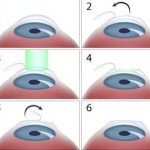New K1 Syringe Will Make Injections Safer
You have A headache, but you do not reach for a tablet. Instead, you opt for something you are convinced is more effective: an injection. That is the case in many of the poorest countries, where equipment such as a syringe attached to a needle is seen as more useful than some little pill from a packet.
The promise of medical technology exerts a powerful lure. Most of us in the UK would do almost anything to avoid injections. But around the world, some 16 billion jabs are administered every year, and often to people who obviously do not understand the risks. I saw this for myself in Cambodia recently.
The remote village of Roka, a quiet community of rice farmers, is in the grip of an outbreak of HIV. At the time of writing, more than 270 people were infected and five had died. The common factor was that they had been given injections with reused syringes. An unlicensed medic had administered the jabs, passing the HIV from one to another, and he is now in custody facing murder charges. So a simple piece of medical equipment, which must have saved countless lives since it started to be mass-produced in the last century, can be a killer in the wrong hands. The problem is that even if the self-styled medic had tried to sterilise the equipment between each use, it’s almost impossible to be sure of killing off every bug or virus.
The safest solution is a syringe that can only be used once. And that is exactly what British inventor Marc Koska has designed. His K1 syringe, which has earned him awards, has a feature that means it ‘autodisables’ if someone tries to refill it. I had a go myself: as you draw back the handle of the plunger, there’s a click as it snaps off. Now that the costs of these ‘smart’ syringes broadly match those of normal ones, there is a real chance that they will catch on. The World Health Organization has told the manufacturers and big donors that it wants the syringes to become standard by 2020. That may be optimistic. But next time I’m having an jab, I’ll be paying a lot more attention. (Source: BBC Science and Technology)


























